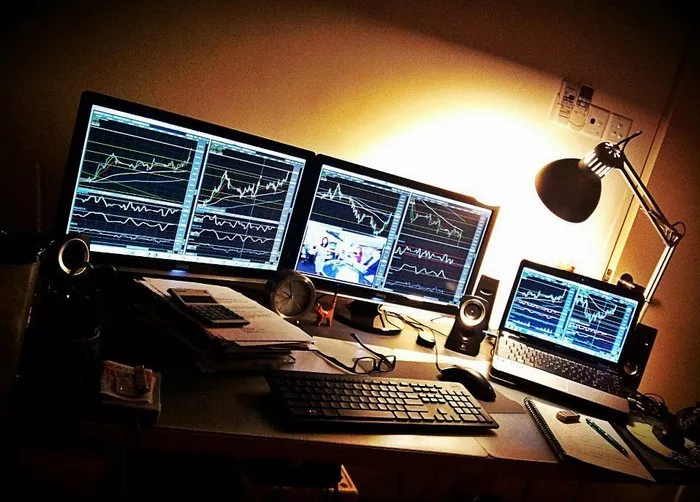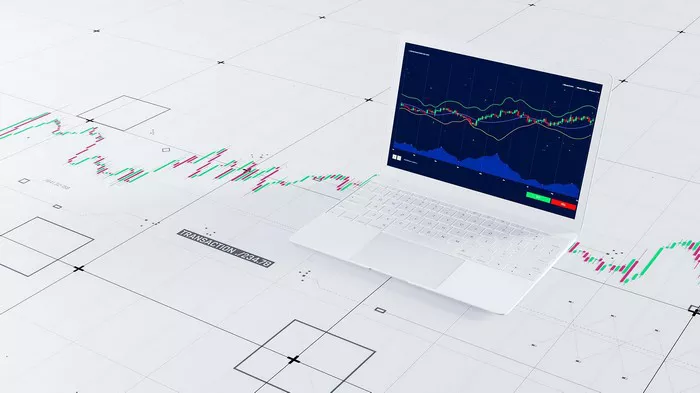Forex trading signals are critical tools for traders in the foreign exchange (forex) market. These signals provide insights and recommendations for when to buy or sell currency pairs. In a market characterized by volatility and rapid price movements, trading signals can guide traders in making informed decisions. This article will explain what forex trading signals are, how they work, the different types of signals available, and how traders can effectively use them in their trading strategies.
Understanding Forex Trading Signals
Forex trading signals are alerts or notifications generated by analysts or trading algorithms that suggest potential trading opportunities. These signals indicate when to enter or exit a trade based on specific criteria, including price movements, technical analysis, and market sentiment.
Importance of Forex Trading Signals
Trading signals are essential for both novice and experienced traders for several reasons:
Time-Saving: Analyzing the forex market can be time-consuming. Trading signals help traders save time by providing ready-made analysis and recommendations.
Expert Guidance: Many trading signals come from experienced analysts or sophisticated algorithms. This expert guidance can help traders make more informed decisions.
Emotion Control: Trading can evoke strong emotions, leading to impulsive decisions. Trading signals can help traders stick to their strategies and reduce emotional trading.
Market Insight: Signals often include insights into market conditions, helping traders understand the broader economic environment affecting currency pairs.
Types of Forex Trading Signals
There are several types of forex trading signals that traders can utilize. These signals can be classified based on their source, methodology, and delivery method.
1. Manual Signals
Manual signals are generated by human analysts who analyze the market using their expertise. These analysts may use technical and fundamental analysis to determine entry and exit points for trades. Manual signals often come from professional trading firms or individual traders who share their insights through newsletters or online platforms.
Pros of Manual Signals:
- Expert insights from seasoned traders.
- Flexibility to adapt to changing market conditions.
Cons of Manual Signals:
- Subject to human error and bias.
- May lag behind automated signals in terms of speed.
2. Automated Signals
Automated signals are generated by trading algorithms or software programs. These systems analyze vast amounts of market data and use predefined criteria to generate trading signals. Automated signals can execute trades on behalf of the trader, allowing for quick responses to market changes.
Pros of Automated Signals:
- Speed and efficiency in trade execution.
- Consistency in analysis without emotional interference.
Cons of Automated Signals:
- Dependence on technology and potential technical failures.
- May not adapt well to unexpected market events.
3. Technical Signals
Technical signals are based on price charts and indicators. Traders use various technical analysis tools, such as moving averages, Fibonacci retracements, and Relative Strength Index (RSI), to identify potential trading opportunities. Technical signals focus on historical price patterns and market behavior.
Pros of Technical Signals:
- Based on quantifiable data and patterns.
- Can be used for short-term trading strategies.
Cons of Technical Signals:
- May not account for fundamental factors influencing the market.
- Can produce false signals during periods of high volatility.
4. Fundamental Signals
Fundamental signals are derived from economic data and news releases. Traders analyze economic indicators, such as employment rates, interest rates, and GDP growth, to gauge market sentiment and predict currency movements. Fundamental signals focus on the economic factors driving currency values.
Pros of Fundamental Signals:
- Provides insights into the underlying economic conditions.
- Can lead to longer-term trading opportunities based on economic trends.
Cons of Fundamental Signals:
- Can be less precise in timing trades.
- Economic data can be unpredictable and subject to revision.
5. Sentiment Signals
Sentiment signals reflect the overall market sentiment towards a currency pair. Traders gauge sentiment through indicators like the Commitment of Traders (COT) report, which shows the positioning of different market participants. Sentiment signals help traders understand whether the market is bullish or bearish on a currency pair.
Pros of Sentiment Signals:
- Offers insights into market psychology.
- Can identify potential reversals or continuations in trends.
Cons of Sentiment Signals:
- Sentiment can change rapidly, leading to potential risks.
- May not provide precise entry and exit points.
How Forex Trading Signals Work
Forex trading signals operate by analyzing market data and providing alerts based on specific criteria. Here’s a step-by-step explanation of how trading signals work:
1. Market Analysis
Analysts or algorithms conduct thorough market analysis using various methods, such as technical, fundamental, or sentiment analysis. This analysis involves studying price charts, economic indicators, and market news.
2. Signal Generation
Based on the analysis, trading signals are generated. These signals typically include the following information:
Currency Pair: The specific currency pair to trade (e.g., EUR/USD).
Direction: The recommended direction to trade (buy or sell).
Entry Point: The suggested price level to enter the trade.
Stop-Loss Level: The price level to exit the trade if it moves against the trader.
Take-Profit Level: The price level at which to exit the trade to secure profits.
3. Signal Delivery
Signals are delivered to traders through various channels, including email, SMS, trading platforms, and mobile apps. Traders receive alerts when new signals are generated, enabling them to act quickly.
4. Trade Execution
Once a trader receives a signal, they can choose to execute the trade manually or set up automated trading to enter and exit positions based on the signal parameters.
Where to Find Forex Trading Signals
There are numerous sources where traders can find forex trading signals. These sources can be broadly categorized into three main groups: signal service providers, trading platforms, and social trading networks.
1. Signal Service Providers
Many companies specialize in providing forex trading signals. These services often charge a subscription fee and offer a range of signal types, including manual and automated signals. Signal providers may also include educational resources and analysis to support traders.
Examples:
Forex Signal Providers: Companies like ForexSignals.com and DailyForex offer a range of signals and analysis.
Brokerage Firms: Some brokerage firms provide their clients with access to trading signals as part of their services.
2. Trading Platforms
Many trading platforms, such as MetaTrader 4 (MT4) and MetaTrader 5 (MT5), offer built-in features for accessing trading signals. Traders can subscribe to signal services directly through these platforms, enabling easy trade execution.
3. Social Trading Networks
Social trading platforms allow traders to follow and copy the trades of experienced traders. These platforms often include performance metrics and allow users to interact with one another. Examples include eToro and ZuluTrade, where traders can access signals and replicate successful strategies.
How to Use Forex Trading Signals Effectively
To make the most of forex trading signals, traders should adopt a systematic approach. Here are some best practices for using trading signals effectively:
1. Understand the Source
Evaluate the credibility of the signal provider. Research their track record, transparency, and the methodology behind their signals. A reliable source will often provide performance reports and backtesting results.
2. Combine Signals with Personal Analysis
While signals can be helpful, they should not be the sole basis for trading decisions. Traders should combine signals with their analysis to confirm the validity of the recommendations. This approach enhances confidence in trade execution.
3. Set Risk Management Parameters
Implementing risk management is crucial when trading with signals. Set appropriate stop-loss and take-profit levels based on personal risk tolerance and market conditions. This practice helps protect trading capital and minimize losses.
4. Stay Informed
Keep up to date with market news and events that may impact currency pairs. Economic data releases and geopolitical events can influence market conditions and the effectiveness of trading signals.
5. Evaluate Signal Performance
Regularly assess the performance of trading signals. Track their success rate and analyze the results to identify patterns and improve trading strategies. This evaluation helps traders understand which signals are most reliable.
Advantages of Using Forex Trading Signals
Using forex trading signals can offer several advantages for traders, regardless of their experience level.
1. Increased Efficiency
Trading signals can help traders make quick decisions, especially in a fast-paced market. This efficiency is essential in forex trading, where timely execution can significantly impact profitability.
2. Access to Expertise
Traders can benefit from the knowledge and expertise of seasoned analysts and sophisticated algorithms. This access can enhance a trader’s decision-making process and overall performance.
3. Reduction of Emotional Trading
Trading signals provide a structured approach to trading, which can help reduce emotional decision-making. By following signals, traders can stick to their strategies and avoid impulsive trades driven by fear or greed.
4. Flexibility
Forex trading signals can be utilized by various types of traders, including scalpers, day traders, and swing traders. Signals can cater to different trading styles, allowing flexibility in trading strategies.
Disadvantages of Using Forex Trading Signals
Despite their advantages, forex trading signals also come with potential drawbacks that traders should consider.
1. Reliance on External Sources
Relying too heavily on external signals can lead to a lack of personal trading skills. Traders should strive to develop their analytical abilities rather than solely depending on signals.
2. False Signals
The forex market is volatile, and signals can sometimes produce false or misleading information. Traders must remain vigilant and verify signals before acting on them.
3. Costs Associated with Signal Services
Many reputable signal providers charge fees for their services. Traders should assess whether the potential gains from using these signals justify the costs.
Conclusion
Forex trading signals play a vital role in guiding traders through the complexities of the forex market. Understanding what these signals are, the various types available, and how to effectively utilize them can enhance a trader’s chances of success. While trading signals offer significant advantages, traders should remain critical and combine signals with their analysis and risk management strategies. By doing so, traders can navigate the forex market more effectively and work towards achieving their trading goals.
Related topics:






























